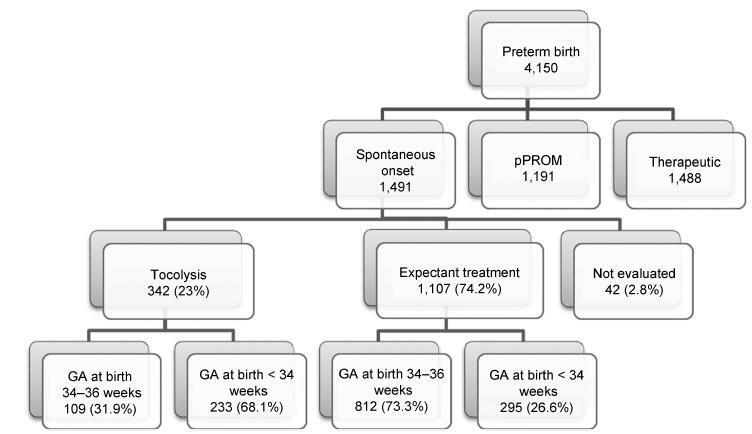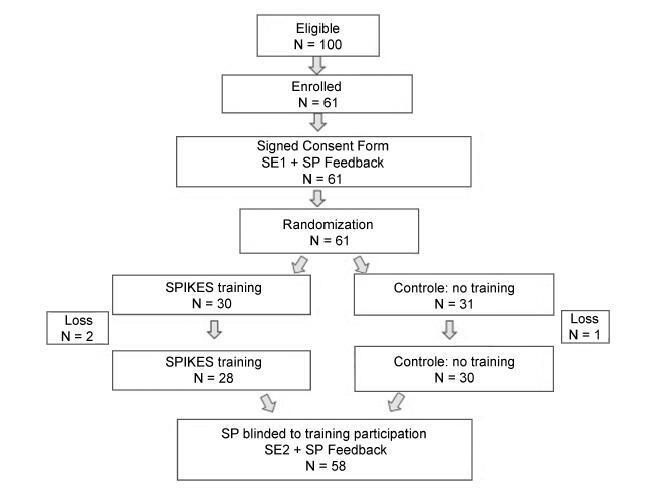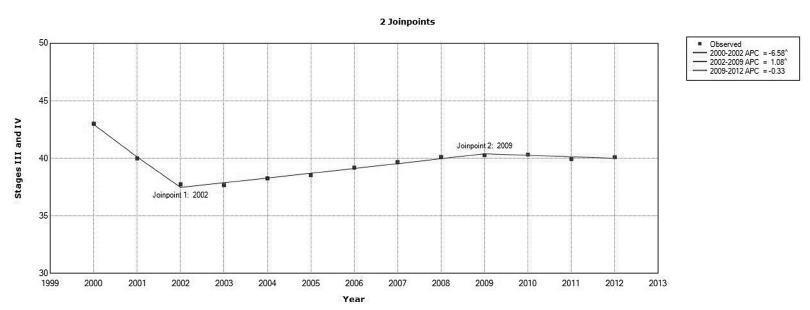Summary
Revista Brasileira de Ginecologia e Obstetrícia. 2018;40(4):180-187
To assess the effectiveness of metformin in the incidence of gestational diabetes mellitus (GDM) in obese pregnant women attending a public maternity hospital in Joinville, Santa Catarina, Brazil.
Randomized clinical trial including obese pregnant women with a body mass index (BMI) ≥ 30 kg/m2, divided into two groups (control and metformin). Both groups received guidance regarding diet and physical exercise. The participants were assessed at two moments, the first at enrollment (gestational age ≤ 20) and the second at gestational weeks 24-28. The outcomes assessed were BMI and gestational diabetes mellitus (GDM) diagnosis. The data distribution was assessed with the Friedman test. For all the analytical models, the p-values were considered significant when lower than 0.05. The absolute risk reduction was also estimated.
Overall, 164 pregnant women were assessed and further divided into 82 participants per group. No significant difference was observed in BMI variation between the control and metformin groups (0.9 ± 1.2 versus 1.0 ± 0.9, respectively, p = 0.63). Gestational diabetes mellitus was diagnosed in 15.9% (n = 13) of the patients allocated to the metformin group and 19.5% (n = 16) of those in the control group (p = 0.683). The absolute risk reduction was 3.6 (95% confidence interval 8.0- 15.32) in the group treated with metformin, which was not significant.
Metformin was not effective in reducing BMI and preventing GDM in obese pregnant women.

Summary
Revista Brasileira de Ginecologia e Obstetrícia. 2018;40(4):171-179
To evaluate the use of tocolysis in cases of preterm birth due to spontaneous preterm labor in a Brazilian sample.
A sample of 1,491 women with preterm birth due to spontaneous preterm labor were assessed, considering treatment with tocolysis or expectant management, according to gestational age at birth (< 34 weeks and 34 to 36 þ 6 weeks) and drugs prescribed. The study took place in 20 Brazilian hospitals from April 2011 to July 2012. Bivariate analyses were conducted to evaluate associations with sociodemographic and obstetric characteristics and odds ratios with their respective 95% confidence intervals were estimated for maternal and neonatal outcomes.
A total of 1,491 cases of preterm birth were considered. Tocolysis was performed in 342 cases (23%), 233 of which (68.1%) were delivered before 34 weeks. Within the expectant management group, 73% was late preterm and with more advanced labor at the time of admission. The most used drugs were calcium channel blockers (62.3%), followed by betamimetics (33%). Among the subjects in the tocolysis group, there were more neonatal and maternal complications (majority non-severe) and an occurrence of corticosteroid use that was 29 higher than in the expectant management group.
Tocolysis is favored in cases of earlier labor and also among thosewith less than 34 weeks of gestation, using preferably calcium channel blockers, with success in achieving increased corticosteroid use. Tocolysis, in general, was related to higher maternal and neonatal complication rates, which may be due to the baseline difference between cases at admission. However, these results should raise awareness to tocolysis use.

Summary
Revista Brasileira de Ginecologia e Obstetrícia. 2018;40(3):137-146
Breaking bad news (BBN) is particularly difficult in perinatology. Previous research has shown that BBN skills can be learned and improved when taught and practiced. This project evaluated whether a structured training session would enhance perinatology residents’ skills in BBN.
This was a randomized controlled intervention study with year 1 to 4 Perinatology residents from a medical school in Brazil, during the 2014/15 school year. A total of 61 out of 100 (61%) eligible residents volunteered to a structured training program involving communicating a perinatal loss to a simulated patient (SP) portraying the mother followed by the SP’s immediatefeedback,bothvideo recorded. Later, residents were randomly assigned to BBN training based on a setting, perception, invitation, knowledge, emotion and summary (SPIKES) strategy with video reviews (intervention) or no training (control group). All residents returned for a second simulation with the same SP blinded to the intervention and portraying a similar case. Residents’ performances were then evaluated by the SP with a checklist. The statistical analysis included a repeated measures analysis of covariance (RM-ANCOVA). Complementarily, the residents provided their perceptions about the simulation with feedback activities.
Fifty-eight residents completed the program. The simulations lasted on average 12 minutes, feedback 5 minutes and SPIKES training between 1h and 2h30m. There was no significant difference in the residents’ performances according to the SPs’ evaluations (p = 0.55). The participants rated the simulation with feedback exercises highly. These educational activities might have offset SPIKES training impact. Conclusion The SPIKES training did not significantly impact the residents’ performance. The residents endorsed the simulation with feedback as a useful training modality. Further research is needed to determine which modality is more effective.

Summary
Revista Brasileira de Ginecologia e Obstetrícia. 2018;40(3):127-136
To analyze the time trend and the factors regarding the diagnosis of latestage breast cancer in Brazil from 2000 to 2012.
We conducted a retrospective cohort study using data from hospital-based cancer registries. Joinpoint regression was used to analyze the time trends of stage at diagnosis. The risk of late-stage presentation was estimated using multinomial logistic regression.
A total of 170,757 cases were analyzed. The median time from diagnosis to treatment was of 43 days (range: 0-182 days). The percentage of cases with late-stage diagnosis decreased from2000 to 2002, with an annual percent change (APC) of -6.6%(95%confidence interval [95%CI]: -7.6--5.5%); it increased from 2002 until 2009, with an APC of 1.1% (95% CI: 0.9-1.3%), and remained stable up to 2012.Women with college education (compared with illiterate women) had less chance of having a late-stage diagnosis (odds ratio [OR]: 0.32; 95%CI: 0.29-0.35). The odds were greater among brown women (OR: 1.30; 95%CI: 1.21-1.41) and black women (OR: 1.63; 95%CI: 1.47-1.82), compared with white women. The odds were also higher for women treated in facilities located and in the Northern region of Brazil (OR: 1.23; 95%CI: 1.04-1.45) and in the Midwest (OR: 1.61;95%CI: 1.34-1.94), compared with those treated in the southern region of the country. Age, histological type, and marital status were some of the other factors that were positively related to staging at the diagnosis.
Access to diagnosis of breast cancer is uneven in Brazil, and women with lower socioeconomic status present a greater probability of having an advanced stage at diagnosis.

Summary
Revista Brasileira de Ginecologia e Obstetrícia. 2018;40(3):121-126
To assess the management chosen by gynecologists after atypical squamous cells (ASCs) cytology results, and to evaluate the outcomes of these cases in Brazilian women.
A prospective observational study evaluated the initial management offered by the gynecologist in the case of 2,458 ASCs cytology results collected between January of 2010 and July of 2016. The outcomes of the cytology, high-risk human papilloma virus (HR-HPV) test and histology were compared in two subgroups: atypical squamous cells of undetermined significance (ASC-US) and atypical squamous cells-cannot exclude high-grade squamous intraepithelial lesion (ASC-H).
In many cases of ASC-US (36.97%) and ASC-H (40.50%), no clinical actions were taken. Cytology was the most frequent follow-up chosen, including for cases of ASC-H, which goes against the conduct recommended in the national guideline. In women over 30 years of age, the period of time elapsed between an ASC-US result and a new cytology was in 13.03 months, in disagreement with the national guideline recommendations (p< 0.0001). Negative for intraepithelial lesions or malignancy (NILM) cytologic (p = 0.0026) and histologic (p = 0.0017) results in the follow-up were associated with prior ASC-US, while negative results for ASC-H were cytologically (p< 0.0001) and histologically associated with high-grade squamous intraepithelial lesion (HSIL) (p< 0.0001). Two invasive cervical carcinomas (ICCs) were found in the follow-up for ASC-H, and there was a statistically significant association (p = 0.0341). A positive HR-HPV test was associated with ASC-H (p = 0.0075).
The data suggest that even for a population of Brazilian women assisted at private clinics, the national guidelines recommendations for ASCs results are not followed.
Summary
Revista Brasileira de Ginecologia e Obstetrícia. 2018;40(3):106-114
The aim of this study is to evaluate the burden of indirect causes of maternal morbidity/mortality in Brazil.
Secondary analysis of a multicenter cross-sectional study conducted in 27 referral obstetric units within the Brazilian Network for Surveillance of Severe Maternal Morbidity.
A total of 82,388 women were surveilled: 9,555 women with severe maternal morbidity were included, and 942 (9.9%) of them had indirect causes of morbidity/ mortality. There was an increased risk of higher severity among the indirect causes group, which presented 7.56 times increased risk of maternal death (prevalence ratio [PR]: 7.56; 95% confidence interval [95%CI]: 4.99-11.45). The main indirect causes of maternal death were H1N1 influenza, sepsis, cancer and cardiovascular disease. Non-public antenatal care (PR: 2.52; 95%CI: 1.70-3.74), diabetes (PR: 1.90; 95%CI: 1.24-2.90), neoplasia (PR: 1.98; 95%CI: 1.25-3.14), kidney diseases (PR: 1.99; 95%CI: 1.14-3.49), sickle cell anemia (PR: 2.50; 95%CI: 1.16-5.41) and drug addiction (PR: 1.98; 95%CI: 1.03-3.80) were independentlyassociatedwithworseresultsintheindirectcausesgroup.Someprocedures for the management of severity were more common for the indirect causes group.
Indirect causes were present in less than 10% of the overall cases, but they represented over 40% of maternal deaths in the current study. Indirect causes of maternal morbidity/mortality were also responsible for an increased risk of higher severity, and they were associated with worse maternal and perinatal outcomes. In middle-income countries there is a mix of indirect causes of maternal morbidity/ mortality that points to some advances in the scale of obstetric transition, but also reveals the fragility of health systems.
Summary
Revista Brasileira de Ginecologia e Obstetrícia. 2017;39(12):659-662
The importance of the C677T mutation in the methylenetetrahydrofolate reductase (MTHFR) gene in infertile women remains controversial.
To evaluate if the MTHFR C677T mutations are more frequent in infertile women, and if they can be associated with the occurrence of infertility in the Brazilian population.
This case-control study included 130 infertile women consulting at a private clinic betweenMarch 2003 andMarch 2005 (data previously published), and 260 fertile women attending the family planning outpatient clinic of our institution between April 2012 and March 2013.
The Chi-squared and Fisher Exact tests were used to evaluate the association between the presence of the MTHFR C677T mutation and a history of infertility.
The frequency of the mutation was of 58.5% for the case group (n = 76) and of 49.2% for the fertile controls (n = 128). The mutation was homozygous in 13 women in the case group (10%) and in 23 of the fertile women in the control group (8.8%). These differences were not statistically significant.
These results suggest that the presence of the MTHFR C677T mutation does not constitute a risk factor for infertility, even when themutation is homozygous. Further studies are needed to confirm whether research on this mutation should be considered unnecessary in women with infertility.